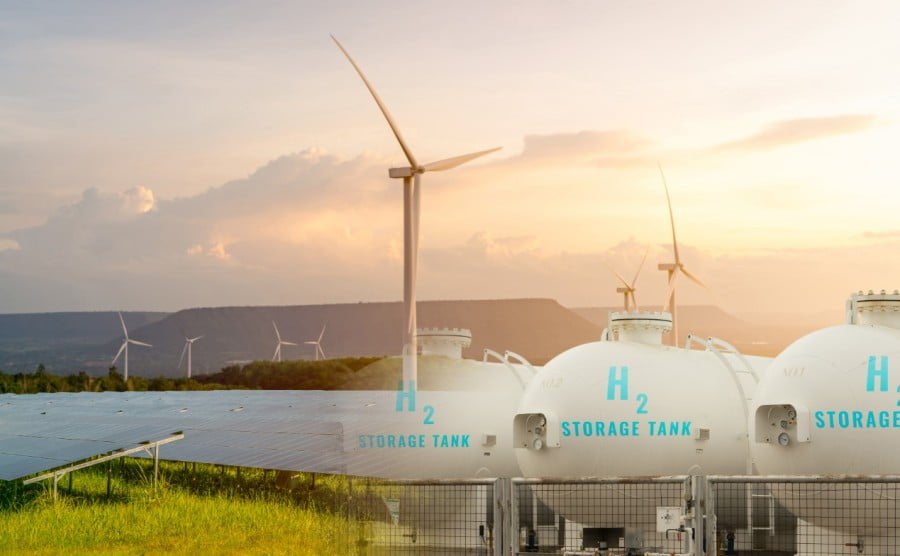Mauritania, under the leadership of Minister of Petroleum, Mines, and Energy Abdessalam Mohamed Saleh, has set forth plans for hydrogen projects that could potentially generate an impressive 80 GW of electrolyzer capacity.
This pipeline is being planned by several renowned companies, including CWP, Chariot, bp, Conjuncta, and Infinity, and while the aspirations for Mauritania to become a green hydrogen hub are significant, two main challenges lie ahead: financing and building the required infrastructure.
As such, the Government is prioritizing securing investment in these areas, with interest already being seen by global players to the likes of Germany, the World Bank and others.
Mauritania is one of the few nations in the world that have significant potential for both solar and wind energy, making the country both a viable and attractive green hydrogen market. What’s more, its proximity to Europe (just four to five days by sea) is advantageous for exports and a key reason why nations such as Germany are looking at investing. Despite this potential, in an exclusive interview with Energy Capital & Power, Moustapha Bechir, Director General of Hydrocarbons at Mauritania’s Ministry of Petroleum, Mines, and Energy, shared that, “the availability of financing for cleaner projects such as renewable energy and green hydrogen is limited. African nations with tremendous potential must address these obstacles by making their concerns heard in venues like MSGBC Oil, Gas & Power 2023″ – the region’s premier event for the energy sector.
While Africa has vast resources for large-scale green hydrogen projects, development is limited due to high capital costs compared to other regions such as Europe, where projects receive subsidies and low-cost financing. Lehbib Khroumbaly, Advisor in Charge of Upstream Hydrocarbons at the Ministry of Petroleum, Mines, and Energy, explains that “Mauritania does not aim to finance green hydrogen entirely on its own, but can finance infrastructure, youth training programs and common facilities that may support such ventures.”
As such, the government is committed to improving its ties with Development Finance Institutions (DFIs) and developing partnerships in order to raise the necessary capital. Minister Salh highlights the magnitude of the required investment, estimated to be around $80 billion. This investment dwarfs Mauritania’s current economic scale, emphasizing the need for external assistance. To that purpose, the ‘Nouakchott message’ – a set of recommendations written last April to enable the development of the African green economy – is a call to mobilize the international investment community. Encouragingly, Khroumbaly explained that “organizations such as the World Bank and Germany have expressed a great interest in playing a role in ensuring the generation of competitively priced green hydrogen in Africa. This joint endeavor intends to foster the effective implementation of green hydrogen projects in the region.”
Currently, Mauritania’s large-scale hydrogen projects remain in the planning phases, with no final investment decisions made as of yet largely due to the projects’ highly technical nature and infrastructure needs. The government is now working on a complete green hydrogen code that will correspond with worldwide standards in order to attract further investment.
“Of course, gas remains a priority,” Bechir says, “but we intend to gradually introduce more renewable energy sources. We expect to execute our first green hydrogen projects by 2030, advancing from grey to blue to green energy.”
The plan is divided into three phases that will last from 2024 to 2027, with increasing gas utilization and decreased heavy fuel oil use in energy production and transportation, as well as enhanced inclusion of renewable energy into the electrical system. “If hydrogen is available in 2030, the gas that has been [previously] used to produce electricity will be replaced by green hydrogen and surplus will be liquefied and exported to other markets,” continued Bechir.
Meanwhile, on the infrastructure side, Carolina Mesa Ivern, bp’s Vice-President for Hydrogen in Spain and New Markets, stated that the company is working closely with the Mauritanian authorities and has found ideal sites for its hydrogen project. Preliminary studies on environmental, social and logistical elements have been undertaken, and measuring machinery is now being installed on-site.
However, West Africa’s present port infrastructure is insufficient to accommodate specific machinery and supplies, such as wind turbines. Ensuring the efficiency of the entire supply chain becomes crucial for the successful implementation of hydrogen projects. The Mauritanian government acknowledges the significance of the issue and has initiated a feasibility study to renovate Nouakchott’s port and establish a special economic zone to accommodate both local and foreign companies. The study is expected to be finalized by 2025, and construction should be completed by 2028-2030.
Mauritania’s pursuit of hydrogen projects holds immense promise for the country’s energy future. The MSGBC Oil, Gas, & Power 2023 – which is organized by Energy Capital & Power – will gather the Mauritanian government, international organizations, and private entities in a collaborative effort to unlock Mauritania’s vast hydrogen potential and shape a sustainable energy landscape.
Source: Energy Capital & Power

